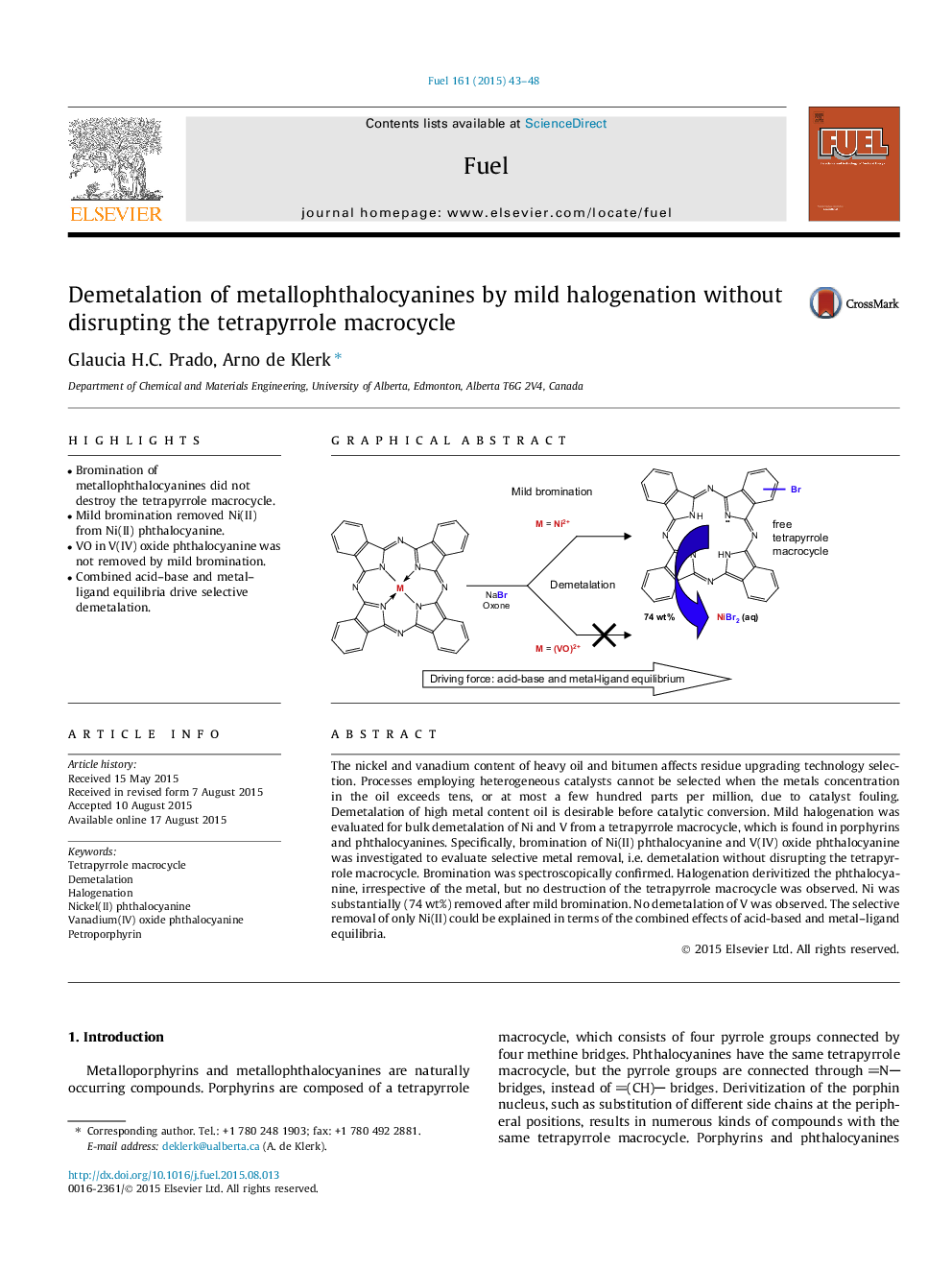| کد مقاله | کد نشریه | سال انتشار | مقاله انگلیسی | نسخه تمام متن |
|---|---|---|---|---|
| 205423 | 461109 | 2015 | 6 صفحه PDF | دانلود رایگان |
• Bromination of metallophthalocyanines did not destroy the tetrapyrrole macrocycle.
• Mild bromination removed Ni(II) from Ni(II) phthalocyanine.
• VO in V(IV) oxide phthalocyanine was not removed by mild bromination.
• Combined acid–base and metal–ligand equilibria drive selective demetalation.
The nickel and vanadium content of heavy oil and bitumen affects residue upgrading technology selection. Processes employing heterogeneous catalysts cannot be selected when the metals concentration in the oil exceeds tens, or at most a few hundred parts per million, due to catalyst fouling. Demetalation of high metal content oil is desirable before catalytic conversion. Mild halogenation was evaluated for bulk demetalation of Ni and V from a tetrapyrrole macrocycle, which is found in porphyrins and phthalocyanines. Specifically, bromination of Ni(II) phthalocyanine and V(IV) oxide phthalocyanine was investigated to evaluate selective metal removal, i.e. demetalation without disrupting the tetrapyrrole macrocycle. Bromination was spectroscopically confirmed. Halogenation derivitized the phthalocyanine, irrespective of the metal, but no destruction of the tetrapyrrole macrocycle was observed. Ni was substantially (74 wt%) removed after mild bromination. No demetalation of V was observed. The selective removal of only Ni(II) could be explained in terms of the combined effects of acid-based and metal–ligand equilibria.
Figure optionsDownload as PowerPoint slide
Journal: Fuel - Volume 161, 1 December 2015, Pages 43–48
